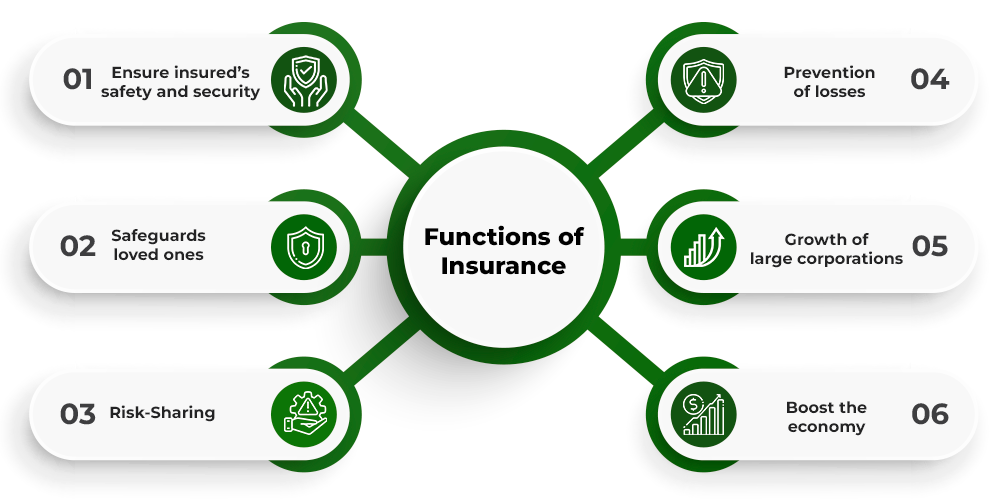Things about Pacific Prime
Things about Pacific Prime
Blog Article
The 7-Second Trick For Pacific Prime
Table of ContentsSome Of Pacific PrimeIndicators on Pacific Prime You Should KnowSome Known Details About Pacific Prime Facts About Pacific Prime RevealedThe Pacific Prime Statements

This is due to the fact that the data were accumulated for a period of solid financial performance. Of the approximated 42 million people who were without insurance, all but concerning 420,000 (about 1 percent) were under 65 years old, the age at which most Americans come to be qualified for Medicare; 32 million were grownups in between ages 18 and 65, about 19 percent of all adults in this age; and 10 million were children under 18 years of age, regarding 13.9 percent of all youngsters (Mills, 2000).
These estimates of the variety of persons without insurance are produced from the yearly March Supplement to the Current Populace Survey (CPS), conducted by the Demographics Bureau. Unless or else kept in mind, nationwide quotes of people without medical insurance and percentages of the population with various kinds of protection are based on the CPS, the most commonly utilized source of quotes of insurance protection and uninsurance prices.
The Best Strategy To Use For Pacific Prime

Still, the CPS is specifically valuable due to the fact that it creates annual quotes fairly swiftly, reporting the previous year's insurance policy coverage estimates each September, and due to the fact that it is the basis for a constant set of estimates for greater than 20 years, enabling evaluation of patterns in protection over time. For these reasons, as well as the extensive use the CPS in other researches of insurance policy coverage that are offered in this report, we rely upon CPS estimates, with constraints kept in mind.

The estimate of the number of uninsured individuals increases when a population's insurance coverage condition is tracked for numerous years. Over a three-year duration starting early in 1993, 72 million people, 29 percent of the united state populace, lacked protection for at the very least one month. Within a solitary year (1994 ), 53 million people experienced at least a month without protection (Bennefield, 1998a)
Six out of every 10 uninsured grownups are themselves utilized. Working does improve the likelihood that one and one's household participants will have insurance policy, it is not a warranty. Even members of family members with two full time wage income earners have virtually a one-in-ten opportunity of being uninsured (9.1 percent without insurance rate) (Hoffman and Pohl, 2000).
Top Guidelines Of Pacific Prime
New immigrants represent a considerable percentage of individuals without wellness insurance policy. One evaluation has associated a substantial part of the recent growth in the dimension of the U.S. uninsured population to immigrants who arrived in the nation between 1994 and 1998 (Camarota and Edwards, 2000). Current immigrants (those that came to the USA within the previous 4 years) do have a high rate of being uninsured (46 percent), yet they and their children make up just 6 percent of those without insurance coverage country wide (Holahan et al., 2001).
The partnership in between medical insurance and access to care is well established, as documented later in this chapter. Although the connection between medical insurance and health and wellness results is neither direct nor easy, a considerable clinical and wellness solutions research study literature web links health and wellness insurance coverage to better access to care, much better quality, and improved individual and populace wellness standing.
Degrees of evaluation for analyzing the effects of uninsurance. This conversation of wellness insurance policy coverage concentrates primarily on the united state population under age 65 due to the fact that basically all Americans 65 and older have Medicare or other public insurance coverage. It focuses especially on those without any wellness insurance for any kind of length of time.
Unknown Facts About Pacific Prime
The issues faced by the underinsured are in some areas similar to those faced by the without insurance, although they are typically less serious. Health insurance, nonetheless, is neither necessary neither adequate to obtain access to clinical services. The independent and straight effect of wellness insurance protection on access to wellness services is well developed.
Others will get the health and wellness treatment they need also without health insurance policy, by paying for it expense or seeking it from companies that provide treatment totally free or at very subsidized rates. For still others, wellness insurance alone does not make sure invoice of treatment due to various other nonfinancial obstacles, such as an absence of healthcare providers in their area, limited access to transport, illiteracy, or etymological and social differences.
The Basic Principles Of Pacific Prime
Formal research study regarding without insurance populaces in the USA dates to the late 1920s and very early 1930s when the Committee on the a fantastic read Expense of Medical Care created a collection of records concerning funding physician office gos to and hospitalizations. This concern came to be significant as the varieties of clinically indigent climbed up throughout the Great Clinical depression.
Report this page